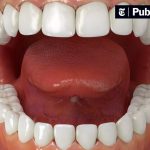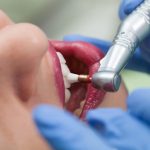Decode Your Dog’s Age: A Guide to Reading Canine Teeth for Accurate Age Assessment
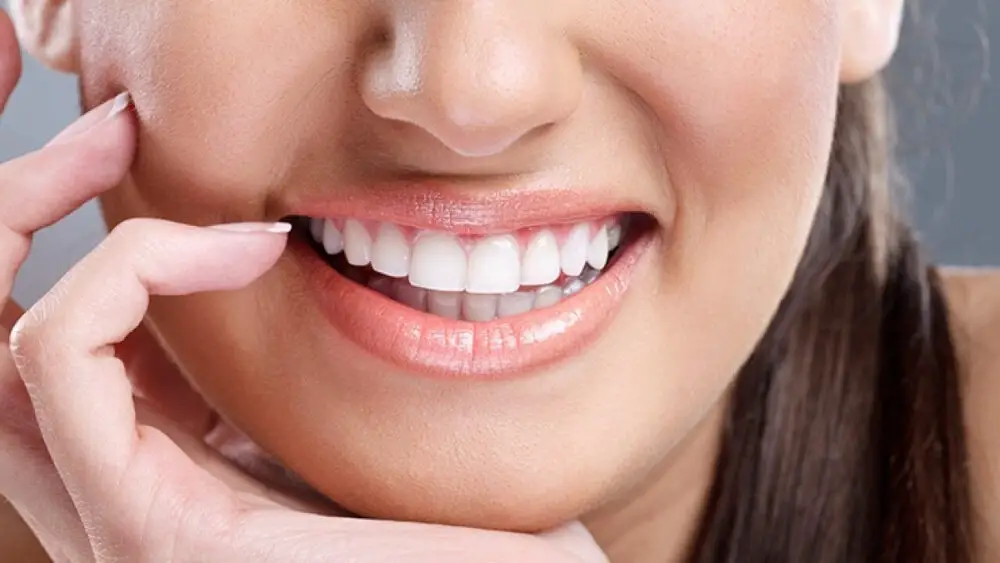
Dogs have been a mans’ best friend for centuries, and they are one of the most beloved pets worldwide. However, as dogs age, it becomes challenging to determine their exact age. Unlike humans who have birth certificates, dogs do not have documented records of their age, making it challenging to determine their age accurately. Fortunately, there is a reliable method for determining a dog’s age – by examining their teeth. A dog’s teeth can provide valuable insight into their age, health, and overall well-being. Understanding how to read a dog’s teeth is a useful skill for pet owners, veterinarians, and animal enthusiasts alike. The process of determining a dog’s age by examining their teeth is a fascinating one. A dog’s teeth undergo significant changes throughout their life, and these changes can provide clues about their age. By examining the size, shape, and condition of a dog’s teeth, it is possible to determine their approximate age. Additionally, a dog’s teeth can also reveal information about their diet, health, and overall lifestyle. Knowing how to read a dog’s teeth is an essential skill that can help pet owners provide better care for their furry friends and help veterinarians provide accurate diagnoses and treatment plans. In this guide, we will explore how to read canine teeth for age assessment and provide valuable insights into your dog’s health and well-being.
Knowing a dog’s age is crucial for various reasons. Firstly, it helps in providing the appropriate care and nutrition needed for their stage of life. Puppies require a different diet and exercise regimen than adult dogs, while senior dogs may need special attention due to age-related health issues. Secondly, it allows for accurate vaccination schedules and preventative care that can help prolong their lifespan. Additionally, knowing a dog’s age can also help in predicting their behavior and training needs. Younger dogs may require more socialization and training, while older dogs may have limitations due to physical and cognitive decline. Overall, understanding a dog’s age is essential in ensuring they receive the necessary care and attention to maintain a happy and healthy life.
The age estimation of dogs is an important aspect of veterinary medicine, and it is commonly determined by observing a combination of physical and behavioral factors. However, an accurate assessment of age can be difficult, especially if the dog’s history is unknown. One of the most reliable methods for estimating a dog’s age is by examining their teeth. The development and wear of the teeth can provide valuable information about the dog’s age, as well as potential health issues. Veterinarians and other animal health professionals use a variety of methods to estimate a dog’s age, including examining the teeth, looking at the dog’s overall physical condition, and observing their behavior. By using these techniques, they can accurately determine the age of a dog and provide appropriate care and treatment to ensure their health and well-being.
Understanding Canine Teeth
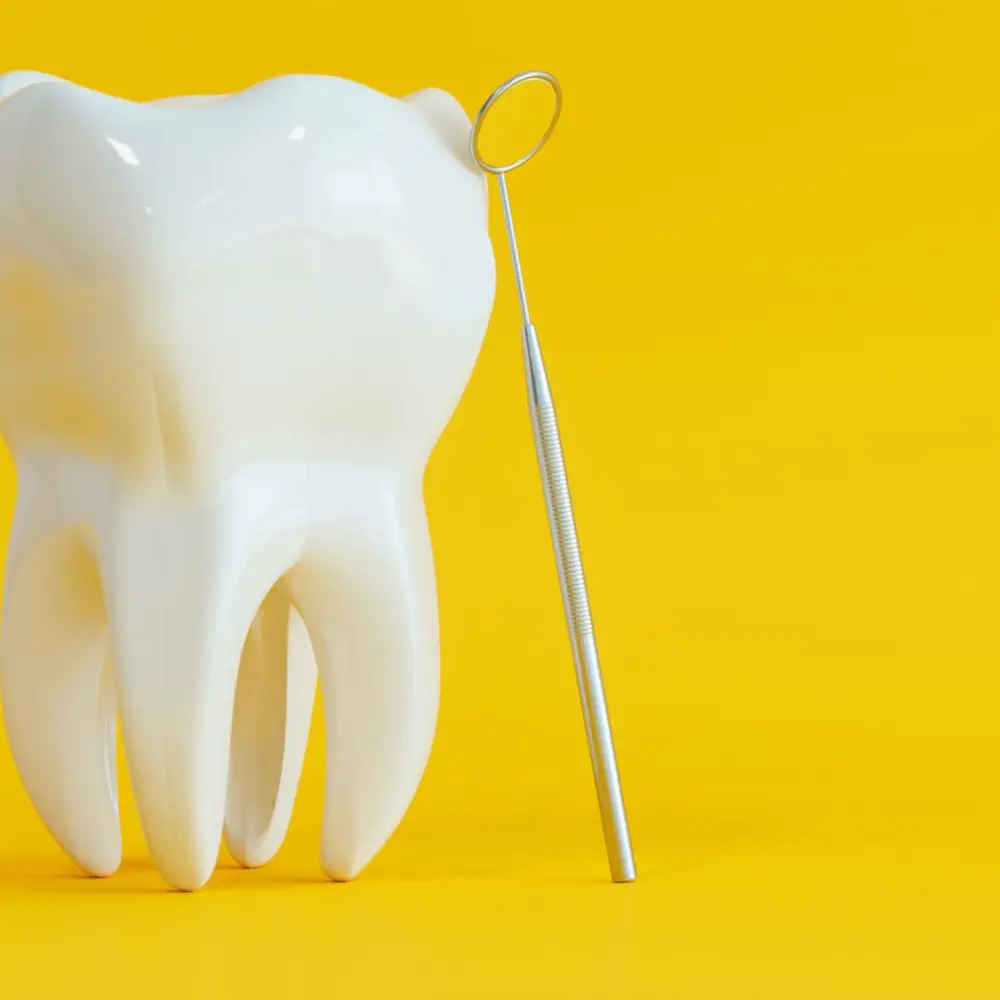
Canine teeth are one of the most essential elements in a dog’s dentition. They are the pointy teeth located in the front of a dog’s mouth, and their primary function is to grasp and tear meat. Understanding canine teeth is crucial for accurate age assessment in dogs, as they can give us a good idea of a dog’s age by looking at their wear and tear. Canine teeth typically erupt around four to six months of age in puppies. As they age, the enamel on their teeth begins to wear down, and the dentin underneath becomes more visible. The wear on a dog’s teeth can tell us a lot about their age, as well as their diet and habits. For example, a dog with heavily worn teeth is likely to be older than a dog with relatively intact teeth. Canine teeth can also give us clues about a dog’s overall health. Dental problems are prevalent in dogs, and they can have serious consequences if left untreated. Regular dental check-ups are important to ensure that your dog’s teeth are healthy and free from any issues that could impact their overall well-being. Proper dental hygiene, such as regular brushing and dental cleanings, can help prevent dental problems and keep your dog’s teeth in tip-top shape. By understanding canine teeth, we can not only determine a dog’s age but also ensure that they are healthy and well-cared for.
Canine teeth are important for dogs as they play a crucial role in their survival and overall health. There are four different types of canine teeth, including the incisors, canines, premolars, and molars. The incisors are located at the front of the mouth and are used for biting and tearing food. Canines are the most prominent and recognizable teeth, used for gripping and tearing prey. Premolars are smaller, located behind the canines, and used for grinding and crushing food. Lastly, molars are located at the back of the mouth and used for grinding food. Understanding the different types and functions of canine teeth is essential for accurately assessing a dog’s age and overall health.
Canine teeth are crucial for a dog’s survival, and they change as the dog ages. As puppies, dogs have sharp and small teeth, and at around three to four months, they begin to lose their baby teeth. The adult teeth start to grow in, and the canine teeth become larger and more prominent as the dog reaches adulthood. As the dog continues to age, the teeth may become worn down, discolored, and may even develop cracks or chips. Moreover, as the dog enters their senior years, the teeth may start to loosen or fall out altogether, leading to potential dental issues. Understanding the changes in a dog’s teeth is essential for accurate age assessment and proper dental care.
Using Teeth to Estimate Age
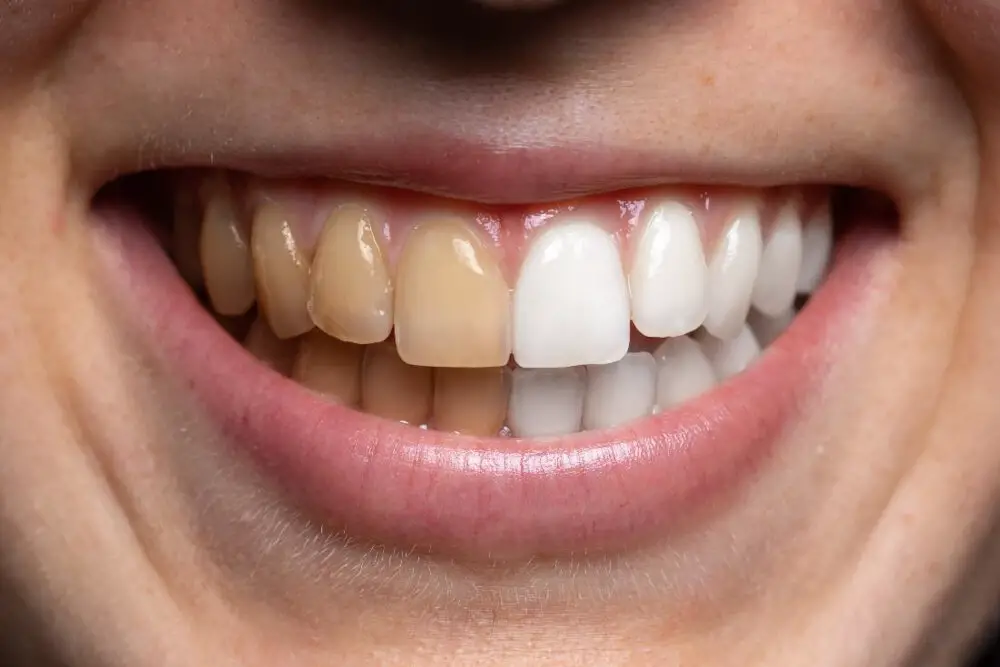
Dogs’ teeth can be a useful tool to estimate their age accurately. The process involves examining the dog’s teeth for signs of wear, tartar buildup, and gum recession. Puppies’ teeth are different from adult dogs’ teeth, and they can give a general idea of the dog’s age. Puppies have 28 baby teeth, which they start losing at around three months of age. By six months old, they should have all their adult teeth, which are 42 in total. As dogs age, their teeth tend to show more signs of wear and tear. This includes discoloration, chipping, and cracking. One of the most significant indicators of a dog’s age is their teeth’s tartar buildup. Tartar is a hard, yellowish substance that accumulates on the teeth and can cause gum disease and tooth decay. As a dog ages, they are more likely to accumulate tartar, which is why examining the amount of tartar on a dog’s teeth can provide a rough estimate of their age. Another sign of aging teeth is gum recession. This occurs when the gums start to pull away from the teeth, exposing the roots. Just like tartar buildup, gum recession is more likely to occur in older dogs. By examining the amount of gum recession, a veterinarian or dog owner can get a good idea of the dog’s age.
When examining a dog’s teeth, it is important to look at several factors to estimate their age accurately. The most crucial indicator is the wear and tear on their incisors and canines. Puppies typically have all their baby teeth by eight weeks old, and these fall out between four and six months. Once a dog reaches a year old, their teeth are fully formed, and the wear and tear on their teeth can give you a good estimate of their age. Signs of tartar buildup, missing teeth, and gum recession can also provide clues to the dog’s age. By looking at all of these factors together, you can accurately assess a dog’s age and provide appropriate care and attention for their dental health.
Understanding the different stages of dental development in dogs is important for accurate age assessment. Puppies are born without teeth, but within two to three weeks, their deciduous incisors and canines begin to erupt. By four to six weeks, their deciduous premolars and molars emerge. These baby teeth are small, sharp, and white. As the puppy grows, their baby teeth fall out, and their adult teeth begin to emerge. This process starts around three to four months and continues until they are six to seven months old. Adult teeth are larger, duller, and more yellow than baby teeth. The final stage of dental development occurs as the dog ages, and their teeth may begin to show signs of wear and tear, such as chips or wear on the enamel.
Other Methods for Age Assessment

While examining a dog’s teeth is a reliable way to determine its age, there are other methods that can be used to provide additional information. One of these methods is examining the dog’s eyes. As a dog ages, its eyes will become cloudy and develop a grayish-blue film over the pupil. This is called nuclear sclerosis and is a natural part of the aging process. However, this condition is often mistaken for cataracts, which are more serious and can lead to blindness. By examining a dog’s eyes, a veterinarian can determine if the dog is experiencing nuclear sclerosis or if it has developed cataracts, which can help to provide a more accurate assessment of the dog’s age. Another method for assessing a dog’s age is by examining its coat. As a dog ages, its coat will begin to gray and lose its luster. The hair may also become thinner and more brittle. By examining a dog’s coat, a veterinarian can determine if the dog is experiencing these signs of aging, which can help to provide a more accurate assessment of the dog’s age. Additionally, examining the skin can also provide valuable information about a dog’s age. As a dog ages, its skin will become thinner and less elastic, which can lead to wrinkles and sagging. By examining a dog’s skin, a veterinarian can determine if the dog is experiencing these signs of aging, which can help to provide a more accurate assessment of the dog’s age.
In addition to examining a dog’s teeth, there are other physical characteristics that can provide clues about their age. One of the most obvious signs is greying fur, which typically begins around the muzzle and gradually spreads throughout the body. Another indicator is joint health, as older dogs may experience stiffness and arthritis. A dog’s eyes can also reveal their age, with older dogs often developing cloudiness or a bluish tint. Other signs of aging may include a decrease in energy level, hearing loss, and changes in weight or body shape. By taking these factors into account, pet owners can better understand their dog’s health and provide appropriate care as they age.
Dental examination is considered the most reliable method for estimating a dog’s age due to the changes that occur in their teeth over time. As dogs age, their teeth undergo several transformations, including wear and tear, yellowing, and gum recession. By examining the condition of a dog’s teeth, a veterinarian can make a reasonable estimate of the dog’s age. This method is more accurate than relying on physical traits or behavior, which can be misleading. Additionally, dental examination can also reveal potential health issues, such as tooth decay or gum disease, allowing for early intervention and treatment. Overall, dental examination is an essential tool for accurately assessing a dog’s age and overall health.
Tips for Accurate Age Assessment
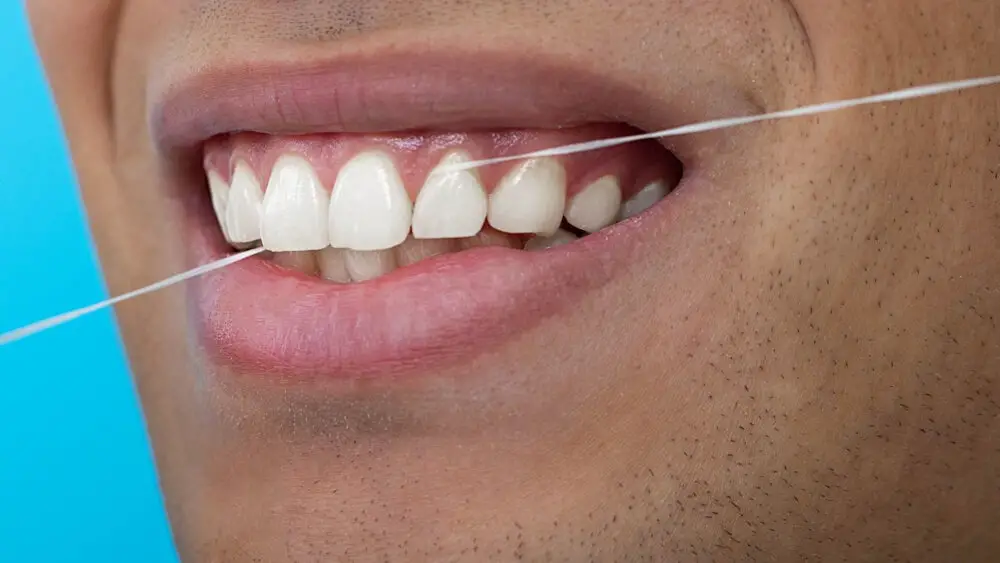
Accurately assessing a dog’s age can be a daunting task, but it is a crucial one for pet owners and veterinarians alike. The age of a dog can determine their nutritional needs, appropriate exercise routine, and potential health concerns. To accurately assess a dog’s age, it is essential to analyze their teeth. A dog’s teeth can provide valuable information on their age, as well as their overall health. To ensure accurate age assessment, there are a few tips to keep in mind. Firstly, it is important to examine the dog’s incisors. Puppies will typically have 28 baby teeth, which will be replaced by 42 adult teeth by the time they are 8 months old. By examining the size, shape, and condition of the dog’s incisors, it is possible to estimate their age accurately. It is also essential to examine the dog’s molars, which can provide insight into their age and overall health. The presence of tartar and plaque on the molars can indicate that the dog is older, while healthy, white teeth can indicate that the dog is younger. Another tip for accurate age assessment is to pay attention to the wear and tear on the dog’s teeth. As dogs age, their teeth will naturally become worn down, which can provide valuable information on their age. By examining the wear and tear on the dog’s teeth, it is possible to estimate their age accurately. It is also essential to examine the color of the dog’s teeth. Older dogs will typically have yellow or brown teeth, while younger dogs will have white teeth. By examining the color of the dog’s teeth, it is possible to estimate their age accurately. In conclusion, accurately assessing a dog’s age is a crucial task that requires careful examination of their teeth. By following these tips, pet owners and veterinarians can estimate a dog’s age accurately, which can help ensure that they receive the appropriate care and attention they need to live a happy and healthy life.
Conducting a thorough dental examination is crucial for assessing a dog’s age accurately. Firstly, it is essential to ensure the dog is comfortable and at ease before proceeding with the examination. Checking for plaque, tartar, and gum disease is vital in determining the age of the dog, as these conditions worsen with age. Additionally, examining the color and shape of the teeth, as well as any missing or broken teeth, can provide valuable information about the dog’s age. Finally, it is essential to check the dog’s bite and jaw alignment, as these can also change with age. By following these tips, veterinarians and pet owners can conduct a thorough dental examination and accurately assess a dog’s age.
Estimating a dog’s age can be a tricky task, and there are several common mistakes that people tend to make. One of the most common mistakes is assuming that a dog’s age can be determined solely by its size or breed. While certain breeds may tend to live longer or shorter lives than others, there is still a lot of variation within each breed. Another mistake is assuming that a dog’s teeth are the only indicator of its age. While a dog’s teeth can give some clues about its age, they are not always a reliable indicator. Other factors, such as overall health and activity level, can also play a role in determining a dog’s age. Finally, it’s important to remember that while estimating a dog’s age can be helpful, it’s not always necessary. What’s most important is providing your furry friend with the love and care they need to live a happy and healthy life, regardless of their age.
Accurate age assessment in dogs is crucial for a number of reasons. Firstly, knowing a dog’s true age can help veterinarians make informed decisions about their health care needs and potential risks for age-related diseases. Secondly, it can aid in training and behavior modification, as certain behaviors may be more typical of dogs at certain life stages. Additionally, accurate age assessment is important for breeders to ensure they are breeding dogs at appropriate ages, and for shelters to provide potential adopters with as much information as possible about the dog’s history and needs. Understanding how to read a dog’s teeth for age can provide valuable insights into their health and behavior, making it an essential skill for any dog owner or caretaker.
Canine teeth are an essential tool for estimating a dog’s age accurately. As dogs age, their teeth undergo significant changes. Puppies have sharp, pointy teeth, while adult dogs have more worn and rounded teeth. The color of the teeth can also indicate age, with younger dogs having whiter teeth and older dogs having more yellowish or brownish teeth. Additionally, the amount of tartar buildup on the teeth can also be an indicator of age. By examining a dog’s canine teeth, you can accurately estimate their age and provide them with the appropriate care they need. It’s essential to keep in mind that this method is not 100% accurate and should be used in conjunction with other methods for the most accurate age assessment.
It is highly recommended for dog owners to consult with a veterinarian for accurate age assessment of their furry friends. While there are various methods to estimate a dog’s age, such as observing their behavior, physical appearance, and dental health, only a veterinarian can provide a precise assessment. A veterinarian can conduct a thorough dental examination and analyze the dog’s teeth for any signs of wear, erosion, or tartar buildup, which can help determine the dog’s age accurately. Additionally, a veterinarian can perform other medical tests to assess a dog’s overall health and identify potential health issues that may arise with age. Seeking professional advice from a veterinarian can enable dog owners to provide optimal care and attention according to their dog’s age and health needs.
Conclusion
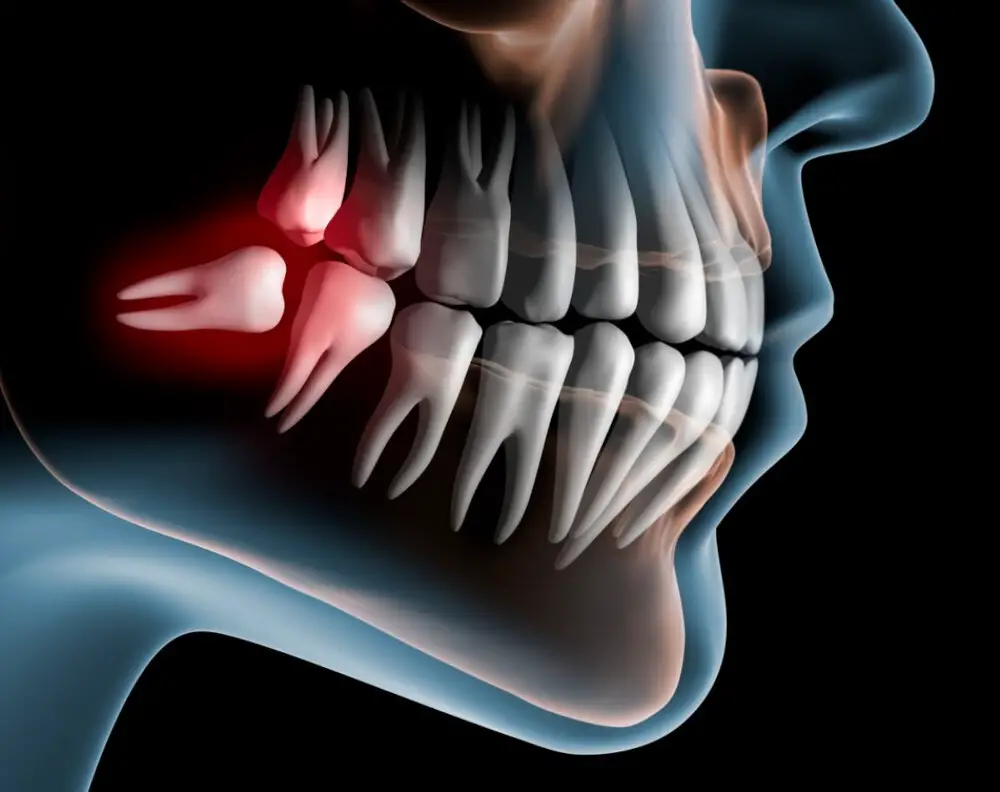
In conclusion, learning how to read your dog’s teeth for an accurate assessment of their age is an essential skill that every dog owner should possess. By understanding the changes that occur in a dog’s mouth over time, you can provide the appropriate care and attention needed for their specific age group. Whether your dog is a puppy or a senior, decoding their age through their teeth can help you make informed decisions about their health and well-being. So take the time to learn about your dog’s dental health, and you’ll be rewarded with a lifetime of love and companionship from your furry friend.

